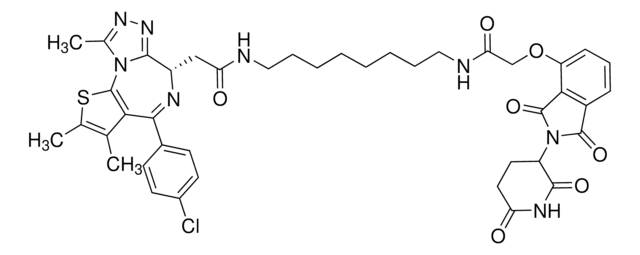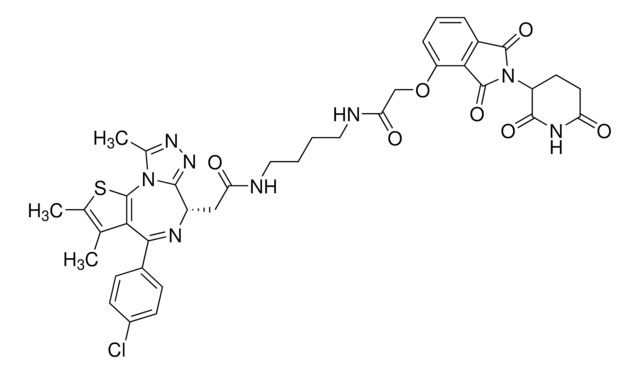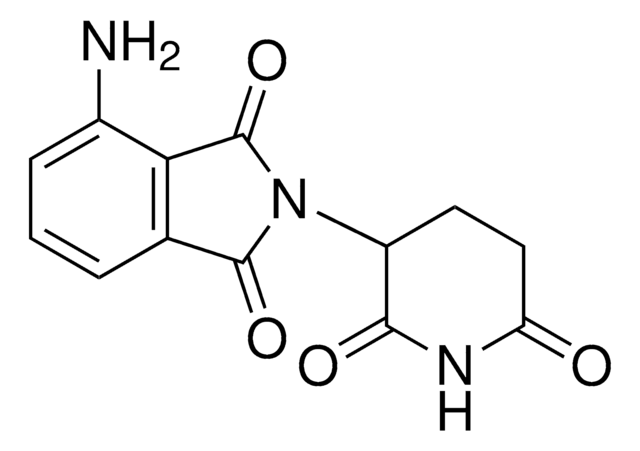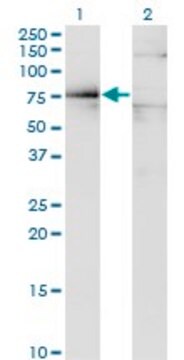SML2601
dTAG-13
≥98% (HPLC), powder, degradation tag (dTAG) system
同義詞:
(2S)-(1R)-3-(3,4-Dimethoxyphenyl)-1-(2-(2-((6-((2-(2,6-dioxopiperidin-3-yl)-1,3-dioxoisoindolin-4-yl)oxy)hexyl)amino)-2-oxoethoxy)phenyl)propyl 1-((S)-2-(3,4,5-trimethoxyphenyl)butanoyl)piperidine-2-carboxylate, d-TAG-13
About This Item
推薦產品
產品名稱
dTAG-13, ≥98% (HPLC)
ligand
thalidomide
品質等級
化驗
≥98% (HPLC)
形狀
powder
顏色
white to beige
溶解度
DMSO: 2 mg/mL, clear
儲存溫度
−20°C
SMILES 字串
O=C(O[C@@H](C1=C(C=CC=C1)OCC(NCCCCCCOC2=C(C3=CC=C2)C(N(C3=O)C4CCC(NC4=O)=O)=O)=O)CCC5=CC=C(C(OC)=C5)OC)[C@@H]6CCCCN6C([C@H](C7=CC(OC)=C(C(OC)=C7)OC)CC)=O
InChI
1S/C57H68N4O15/c1-7-37(36-32-47(71-4)52(73-6)48(33-36)72-5)54(65)60-29-14-12-19-41(60)57(68)76-43(25-22-35-23-26-44(69-2)46(31-35)70-3)38-17-10-11-20-42(38)75-34-50(63)58-28-13-8-9-15-30-74-45-21-16-18-39-51(45)56(67)61(55(39)66)40-24-27-49(62)59-53(40)64
InChI 密鑰
BJFBRLAWLPZOMJ-QHVFGHLPSA-N
生化/生理作用
其他說明
法律資訊
儲存類別代碼
11 - Combustible Solids
水污染物質分類(WGK)
WGK 3
閃點(°F)
Not applicable
閃點(°C)
Not applicable
相關內容
Targeted protein degradation (TPD) is an emerging drug discovery strategy that uses small-molecules, such as proteolysis-targeting chimeras (PROTACs), to eradicate targeted proteins linked to disease from cells.
我們的科學家團隊在所有研究領域都有豐富的經驗,包括生命科學、材料科學、化學合成、色譜、分析等.
聯絡技術服務








